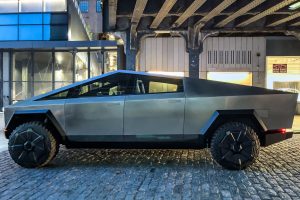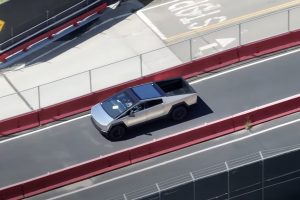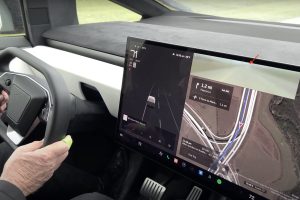- 💥 A Tesla Cybertruck was involved in a mishap at the Beverly Hills Hotel in Los Angeles when a valet accidentally drove it over a ledge.
- 🚙 Despite its robust design, the Cybertruck sustained damage from the accident, highlighting its vulnerability in certain situations.
- 🛑 Tesla offers Valet Mode to prevent such incidents by limiting power and imposing speed restrictions, but it’s not entirely foolproof.
- 🤷♂️ Accidents involving Teslas driven by valets or service personnel aren’t unprecedented, as evidenced by past incidents reported.
In a surprising turn of events, a Tesla Cybertruck recently found itself at the center of attention not for its groundbreaking design or revolutionary features, but rather for an unfortunate mishap at the Beverly Hills Hotel in Los Angeles. This incident serves as a reminder that even the most robust vehicles are not immune to accidents and highlights the importance of continued vigilance and innovation in automotive safety.
The Incident: A Cybertruck’s Fall from Grace
Imagine the scene: a valet, tasked with the simple act of moving a Tesla Cybertruck, inadvertently sends the vehicle careening over a ledge. What was intended as a routine task turned into a spectacle, showcasing the vulnerability of even the most formidable automobiles in unexpected circumstances. Despite the Cybertruck’s reputation for durability and strength, it couldn’t withstand the impact unscathed, raising questions about its resilience in real-world scenarios.
Unveiling Vulnerability
The Cybertruck’s mishap underscores a fundamental truth: no vehicle is invincible. While Tesla has positioned the Cybertruck as a symbol of rugged durability, capable of withstanding extreme conditions, this incident reveals that its strength has limits. As consumers, it’s essential to recognize that while advanced safety features and robust construction can mitigate risks, they cannot eliminate them entirely.
Valet Mode: A Limited Safeguard
In response to incidents like these, Tesla offers Valet Mode—a feature designed to prevent unauthorized access and limit the vehicle’s capabilities when in the hands of valet drivers. By restricting power output and imposing speed limits, Valet Mode aims to reduce the likelihood of accidents and unauthorized use. However, as demonstrated by the Cybertruck mishap, Valet Mode is not infallible and may not fully protect against human error or unforeseen circumstances.
Learning from Past Incidents
The Cybertruck mishap is not an isolated incident but part of a broader pattern of accidents involving Teslas driven by valets or service personnel. While Tesla vehicles are renowned for their advanced technology and performance, they are not immune to mishaps when operated by individuals unfamiliar with their intricacies. As consumers, it’s crucial to remain vigilant and advocate for ongoing training and safety protocols to minimize the risk of accidents.
Moving Forward: Embracing Innovation and Safety
As we reflect on the Cybertruck mishap, it’s essential to acknowledge the strides made in automotive safety while recognizing the need for continuous improvement. Tesla’s commitment to innovation has revolutionized the automotive industry, but with innovation comes responsibility. By prioritizing safety features, investing in driver education, and fostering a culture of accountability, we can work towards a future where accidents like these become rare occurrences rather than the norm.
Conclusion: A Call to Action
The Cybertruck mishap serves as a sobering reminder of the fragility of even the most advanced vehicles and the importance of prioritizing safety in all aspects of automotive design and operation. As consumers, advocates, and industry stakeholders, we must remain vigilant, hold ourselves accountable, and demand the highest standards of safety and reliability from automakers. Only then can we ensure that incidents like these become relics of the past, rather than recurring headlines in the future.





